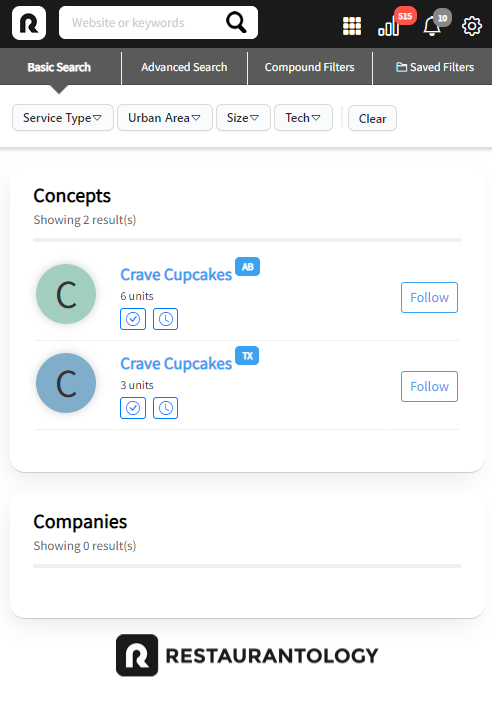Understanding data disambiguation in Restaurantology
How Restaurantology differentiates between similarly named Concepts and Companies.
Updated over a week ago
In the multi-unit restaurant industry, it’s common for Concepts to share identical or similar names, especially in the long tail where regional and independent brands may overlap. Disambiguation ensures accurate identification and data integrity across Restaurantology’s platform and customer CRMs.
Unique website requirement
Restaurantology requires all multi-unit profiles to have a unique website. This is the primary method of disambiguating similarly named Concepts. We recommend customers adopt this practice in their CRMs to reduce ambiguity and maintain clean records.
Disambiguation in the Chrome Extension
When multiple Concepts share the same or similar name, the Restaurantology Chrome Extension appends a superscript identifier to the record name. This allows users to quickly differentiate between profiles.

Disambiguation in Salesforce (SFDC)
Within Salesforce, disambiguation indicators are added to:
- Restaurantology Name field (custom object)
- Account Name field (for records created via the Restaurantology App)
Example:
- Crave Cupcakes {{{AB}}}
- Crave Cupcakes {{{TX}}}
When possible, the predominant State is used as the disambiguation descriptor. In rare cases where multiple Concepts share the same name and operate primarily within the same State, numeric identifiers are added:
- Jalapeno Mexican Restaurant {{{CA – 1}}}
- Jalapeno Mexican Restaurant {{{CA – 2}}}
These markers ensure users can distinguish between similar records when searching or creating Accounts.
Why disambiguation matters
Disambiguation maintains data integrity by preventing duplicate or misassigned records. It supports accurate reporting, cleaner CRM workflows, and more reliable sales and marketing insights.

